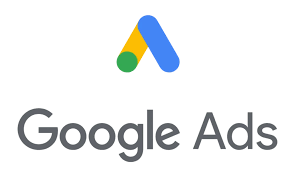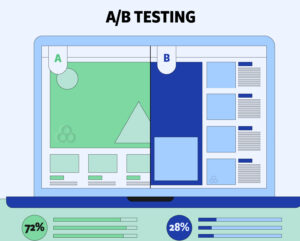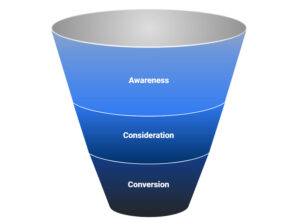
Choosing between Google Ads vs Facebook Ads is a critical decision for businesses aiming to drive traffic to their sales funnels and achieve high conversions. Both platforms dominate the paid advertising landscape, but their strengths, audiences, and ad platform effectiveness vary significantly. At High Converting Funnels, with over 17 years of performance marketing expertise, we’ve helped businesses leverage paid advertising for funnels to turn clicks into revenue.
In this guide, we’ll dive deep into Google Ads vs Facebook Ads, comparing their Google Ads vs Facebook Ads performance for funnels, analyzing real-world data, and sharing funnel conversion strategies to help you maximize Facebook Ads ROI and Google Ads for funnels. Whether you’re a marketer, business owner, or advertiser, this paid ads comparison will guide you to the platform that converts better for your funnel.
Why Google Ads vs Facebook Ads Matters for Funnels
A sales funnel thrives on quality traffic, and Google Ads vs Facebook Ads are two of the most powerful funnel traffic sources. According to Statista, Google Ads commands a 28% share of global digital ad spend, while Facebook Ads holds 24%. Together, they reach billions of users, but their approaches to ad platform performance differ. Google Ads captures users actively searching for solutions, while Facebook Ads targets users based on interests and behaviors. Choosing the right platform for paid advertising for funnels can mean the difference between a 2% conversion rate and a 10% one. Let’s break down Google Ads vs Facebook Ads to uncover which delivers better funnel conversion strategies.
Understanding Google Ads for Funnels

How Google Ads Works
Google Ads operates on a pay-per-click (PPC) model, primarily through search, display, and YouTube campaigns. For funnels, search campaigns are the most relevant, targeting users with high intent based on their search queries. For example, someone searching “best CRM software” is likely ready to explore solutions, making Google Ads ideal for Google Ads for funnels.
Strengths for Funnels
- High Intent: Google Ads excels at capturing users who are actively researching or ready to buy, leading to strong ad platform effectiveness for bottom-of-funnel conversions.
- Keyword Targeting: Precise keyword targeting ensures your ads align with user intent, boosting maximizing ROI with ads.
- Scalability: With a vast search network, Google Ads can drive consistent traffic to your funnel traffic sources.
Weaknesses
- Higher Costs: Cost-per-click (CPC) for competitive keywords can be steep, averaging $1-$2 for search campaigns, per WordStream’s 2024 data.
- Limited Audience Discovery: Google Ads relies on search intent, making it less effective for top-of-funnel awareness compared to Google Ads vs Facebook Ads.
Data Point
A 2024 HubSpot report found that Google Ads search campaigns achieve an average conversion rate of 4.4% for lead generation funnels, higher than the industry average of 3.1%.
Understanding Facebook Ads for Funnels

How Facebook Ads Works
Facebook Ads (part of Meta’s ad platform) targets users across Facebook, Instagram, and the Audience Network based on demographics, interests, and behaviors. For funnels, Facebook Ads is versatile, supporting awareness, lead generation, and retargeting campaigns, making it a strong contender in Google Ads vs Facebook Ads.
Strengths for Funnels
- Rich Audience Targeting: Facebook’s granular targeting (e.g., interests, life events) excels at reaching specific audiences, enhancing Facebook Ads ROI.
- Visual Appeal: Image and video ads capture attention, ideal for top- and mid-funnel funnel conversion strategies.
- Retargeting Power: Facebook’s Pixel enables precise retargeting, re-engaging users who visited your funnel but didn’t convert.
Weaknesses
- Lower Intent: Users on Facebook are often browsing socially, not actively searching, which can lead to lower conversion rates for bottom-of-funnel offers.
- Ad Fatigue: Frequent ad exposure can reduce engagement, requiring fresh creative to maintain ad platform performance.
Data Point
A 2024 AdEspresso study reported that Facebook Ads for lead generation funnels average a 2.5-3% conversion rate, with Facebook Ads ROI peaking for retargeting campaigns.
Comparing Google Ads vs Facebook Ads for Funnels
To determine which platform excels in Google Ads vs Facebook Ads, let’s compare their Google Ads vs Facebook Ads performance across key funnel metrics: audience targeting, cost efficiency, conversion rates, funnel stage suitability, and scalability.
1. Audience Targeting
- Google Ads: Targets users based on search queries, capturing high-intent prospects. Best for audiences already aware of their needs (e.g., “buy running shoes online”). Ideal for mid- and bottom-funnel funnel conversion strategies.
- Facebook Ads: Leverages behavioral and interest-based targeting, reaching users who may not yet know they need your product (e.g., fitness enthusiasts for a gym membership). Excels for top- and mid-funnel awareness.
- Winner: Depends on funnel stage. Google Ads for high-intent bottom-funnel; Facebook Ads for broad top-funnel reach.
2. Cost Efficiency
- Google Ads: Higher CPCs ($1-$5 for competitive industries) but lower cost-per-conversion for high-intent audiences. A 2024 WordStream report notes an average cost-per-lead of $40 for B2B funnels.
- Facebook Ads: Lower CPCs ($0.50-$2) but higher cost-per-conversion for bottom-funnel offers due to lower intent. AdEspresso reports an average cost-per-lead of $20 for e-commerce funnels.
- Winner: Facebook Ads for cost-effective top-funnel traffic; Google Ads for maximizing ROI with ads at the bottom of the funnel.
3. Conversion Rates
- Google Ads: Higher conversion rates (4-6% for search campaigns) due to intent-driven traffic, making it a strong choice for Google Ads for funnels.
- Facebook Ads: Lower conversion rates (2-3%) for cold audiences but excels in retargeting, where rates can hit 5-8%.
- Winner: Google Ads for direct conversions; Facebook Ads for retargeting-driven funnel conversion strategies.
4. Funnel Stage Suitability
- Google Ads: Best for mid- and bottom-funnel stages (Interest, Decision, Action). Users searching for solutions are primed for lead magnets or purchases.
- Facebook Ads: Ideal for top- and mid-funnel stages (Awareness, Interest). Visual ads and lead forms drive engagement and lead capture.
- Winner: Use both strategically—Facebook Ads for awareness, Google Ads for conversions.
5. Scalability
- Google Ads: Scales well for industries with high search volume but can hit cost ceilings in competitive niches.
- Facebook Ads: Highly scalable due to its massive user base (3 billion monthly active users), but ad fatigue requires frequent creative updates.
- Winner: Tie—both scale effectively with proper optimization.
Real-World Case Studies: Google Ads vs Facebook Ads Performance
Case Study 1: E-Commerce Funnel
An e-commerce client selling skincare products tested Google Ads vs Facebook Ads for their funnel.
- Google Ads: Targeted “best anti-aging cream” with search ads, driving traffic to a product page. Conversion rate: 5.2%; cost-per-sale: $45.
- Facebook Ads: Used video ads targeting women aged 35-55 interested in skincare, driving traffic to a lead magnet (free skin quiz). Conversion rate: 3.8%; cost-per-sale: $30 after retargeting.
- Outcome: Facebook Ads delivered lower initial costs and strong top-funnel engagement, while Google Ads drove higher direct conversions. Combining both maximized funnel conversion strategies.
Case Study 2: B2B SaaS Funnel
A SaaS client offering project management software compared Google Ads vs Facebook Ads.
- Google Ads: Ran search ads for “project management tools,” directing to a free trial landing page. Conversion rate: 6.1%; cost-per-lead: $50.
- Facebook Ads: Targeted tech professionals with carousel ads showcasing features, leading to a webinar sign-up. Conversion rate: 2.9%; cost-per-lead: $25.
- Outcome: Google Ads outperformed for bottom-funnel conversions, while Facebook Ads was cost-effective for lead generation. Conversion insights from both platforms showed a hybrid approach yielded the best ROI.
Strategies to Maximize ROI with Google Ads vs Facebook Ads
To leverage Google Ads vs Facebook Ads for funnels, use these funnel conversion strategies based on conversion insights from both platforms:
1. Optimize Audience Targeting
- Google Ads: Use keyword match types (exact, phrase) to target high-intent searches. Negative keywords prevent irrelevant clicks.
- Facebook Ads: Create lookalike audiences based on your best customers and layer interests for precision targeting.
2. Craft Compelling Ads
- Google Ads: Write concise ad copy with strong CTAs (e.g., “Start Your Free Trial Today”). Highlight benefits like “Save 30% on Your First Order.”
- Facebook Ads: Use eye-catching visuals or videos (under 15 seconds) to grab attention. Test carousel or collection ads for variety.
3. Design High-Converting Landing Pages
- Both Platforms: Ensure landing pages align with ad messaging (message match). Optimize for speed (under 3 seconds) and mobile responsiveness. Include trust signals like testimonials or badges.
- Example: A client saw a 40% lift in conversions after aligning their Google Ads for funnels landing page with the search query “affordable CRM.”
4. Leverage Retargeting
- Google Ads: Use remarketing lists for search ads (RLSA) to re-engage visitors who didn’t convert.
- Facebook Ads: Install the Facebook Pixel to retarget website visitors with dynamic ads. Retargeting can boost Facebook Ads ROI by 50%, per a 2024 Meta study.
5. Test and Analyze
- Both Platforms: Run A/B tests on ad copy, visuals, and landing pages. Use Google Analytics or Facebook Ads Manager to track metrics like cost-per-conversion and return on ad spend (ROAS).
- Pro Tip: At High Converting Funnels, our conversion insights from both platforms guide clients to optimize campaigns, achieving up to 60% higher ROAS.
When to Choose Google Ads vs Facebook Ads
Choose Google Ads If:
- Your funnel targets high-intent audiences ready to buy or sign up.
- You’re in a niche with strong search volume (e.g., software, legal services).
- You prioritize direct conversions over brand awareness.
Choose Facebook Ads If:
- Your funnel focuses on top-funnel awareness or lead generation.
- You’re targeting niche audiences based on interests or behaviors (e.g., fitness, fashion).
- You want cost-effective retargeting to nurture leads.
Hybrid Approach
For most funnels, combining Google Ads vs Facebook Ads yields the best results. Use Facebook Ads to build awareness and capture leads, then Google Ads to convert high-intent prospects. This hybrid strategy maximizes ad platform effectiveness and maximizing ROI with ads.
Future Trends for Google Ads vs Facebook Ads in 2025
In 2025, Google Ads vs Facebook Ads will evolve with new trends shaping paid advertising for funnels:
- AI-Driven Optimization: Google’s Performance Max and Meta’s Advantage+ campaigns use AI to optimize ad delivery, improving ad platform performance.
- Video Dominance: Short-form video ads (e.g., Reels, YouTube Shorts) will drive engagement, especially for Facebook Ads.
- Privacy Changes: With cookie deprecation, both platforms will rely on first-party data and contextual targeting, impacting funnel traffic sources.
Tools to Enhance Google Ads vs Facebook Ads Performance
- Google Ads Editor: Streamline campaign management and bulk edits.
- Facebook Ads Manager: Track performance and create custom audiences.
- Google Tag Manager: Monitor funnel interactions for both platforms.
- Hotjar or Crazy Egg: Analyze user behavior on landing pages to improve funnel conversion strategies.
Conclusion
The Google Ads vs Facebook Ads debate boils down to your funnel’s goals, audience, and budget. Google Ads shines for high-intent, bottom-funnel conversions, while Facebook Ads excels in top-funnel awareness and cost-effective retargeting. By understanding Google Ads vs Facebook Ads performance, leveraging funnel conversion strategies, and combining both platforms strategically, you can maximize Facebook Ads ROI and Google Ads for funnels.
Ready to supercharge your funnel? Contact High Converting Funnels at hi@highconvertingfunnels.com or +91 9743015803 to optimize your paid advertising for funnels with our expert strategies.
FAQs
1. Which platform is better for paid advertising for funnels: Google Ads or Facebook Ads?
It depends on your funnel stage. Google Ads is better for bottom-funnel conversions due to high-intent traffic, while Facebook Ads excels for top-funnel awareness and retargeting. A hybrid approach often yields the best ad platform effectiveness.
2. How can I improve Google Ads vs Facebook Ads performance for my funnel?
Optimize targeting, create compelling ads, align landing pages with ad messaging, and leverage retargeting. Regularly test and analyze data to refine funnel conversion strategies and maximizing ROI with ads.
3. What’s the average cost of Google Ads vs Facebook Ads for funnels?
Google Ads has higher CPCs ($1-$5) but lower cost-per-conversion for high-intent audiences. Facebook Ads has lower CPCs ($0.50-$2) but may require retargeting to achieve competitive costs-per-conversion.
4. Can I use both Google Ads and Facebook Ads for the same funnel?
Yes, combining Google Ads vs Facebook Ads is highly effective. Use Facebook Ads for awareness and lead capture, and Google Ads for converting high-intent prospects, maximizing funnel traffic sources.
5. How do I track ad platform performance for Google Ads vs Facebook Ads?
Use Google Analytics for Google Ads and Facebook Ads Manager for Meta campaigns. Tools like Google Tag Manager and Hotjar help track user behavior, ensuring conversion insights from both platforms guide optimization.



